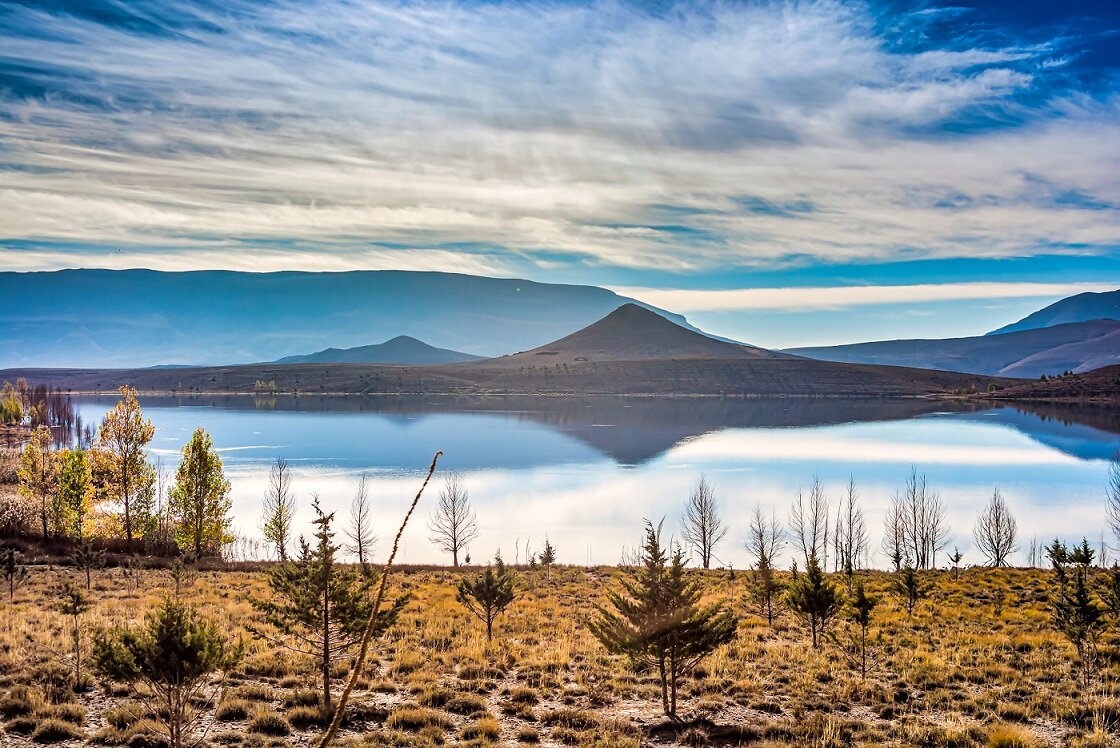The modern-day Sahara desert, located in the northern part of Africa, is the largest of its kind on the planet. It is hard to imagine that over 5000 years ago, it used to be green and covered with vegetation.
Nevertheless, this was actually the case. Proof of this bygone era can still be found on rock paintings made by ancient humans, illustrating water-bound animals like crocodiles and even swimming people.
This green era has been termed the 'African Humid Period' or, more commonly, the 'Green Sahara period.' In the past, it was believed that the required rainfall needed to maintain this amount of vegetation was supplied via a strengthened seasonal monsoon.
Scientists thought that the rotation of the Earth's tilted axis (that occurs about once every 25 thousand years) was the driving force behind this northward shift of the monsoon. Such a shift would produce higher levels of solar radiation over the Northern parts of the African continent.
A green Sahara desert seems very implausible from the perspecdtive of a modern day observer - Image Credit: CHAIWATPHOTOS via Shutterstock / HDR tune by Universal-Sci
A strengthened seasonal monsoon was not enough to create a green Sahara
There was one problem with the above-mentioned hypothesis: climate models were unable to simulate enough plant growth to generate a lush Sahara only using the additional rain that would originate from a strengthened seasonal monsoon. As such, researchers are convinced that perpetual plant coverage can't solely be explained by a single, yearly rainy season.
Recently an international team of scientists has set out to uncover the actual cause of the African Humid Period. They examined pollen and leaf waxes obtained from a sediment core they retrieved from Lake Tislitin Morroco with the aim to accurately reconstruct the vegetation cover and amount of rainfall in the past.
Fossil components of plants like resistant plant molecules and pollen are stored in lakes just as in marine sediments. These elements enable scientists to identify climate conditions as well as the types of vegetation that existed on that location in the past.
The studied sediment core was retrieved from Lake Tislit, located in Morocco - Image Credit: marketa1982 via Shutterstock / HDR tune by Universal-Sci
Winter rain in the northern parts of the Sahara
Using their new findings, the researchers were able to construct a new concept for the greening of northern Africa. Throughout the period of the Green Sahara, as the monsoon was strengthening and flowing northward during the summers, there must have been a southward shift of the belt of westerlies in the winter that brought winter rainfall to North Africa. Following this concept, the team tested their past climate reconstructions from the Tislit record using a mechanistic vegetation model.
Dr. Rachid Cheddadi, one of the lead researchers, explained that there used to be winter rain on the northern margin of the Sahara, and monsoon on the southern margin. Between these two areas, there existed an overlap of the two rain systems that provided rainfall there during both summer and winter, albeit rather sparsely.
A perpetual coverage of plants could only exist with rainfall in both seasons. Plants would simply not survive long enough to live through an entire dry season after a brief rainy season.
According to the research team, these findings provide a new paradigm where it comes to climate research explaining the foundation of the African Humid Period. In order to further develop their model, they aim to schedule a new expedition to find more high-resolution sediment archives from the near-coastal deposits off Morocco.
It is expected that this study not only provides a better understanding of past climate change but also an enhancement for the predictions of future vegetation and climate trends.
Sources and further reading:
FEATURED ARTICLES:











